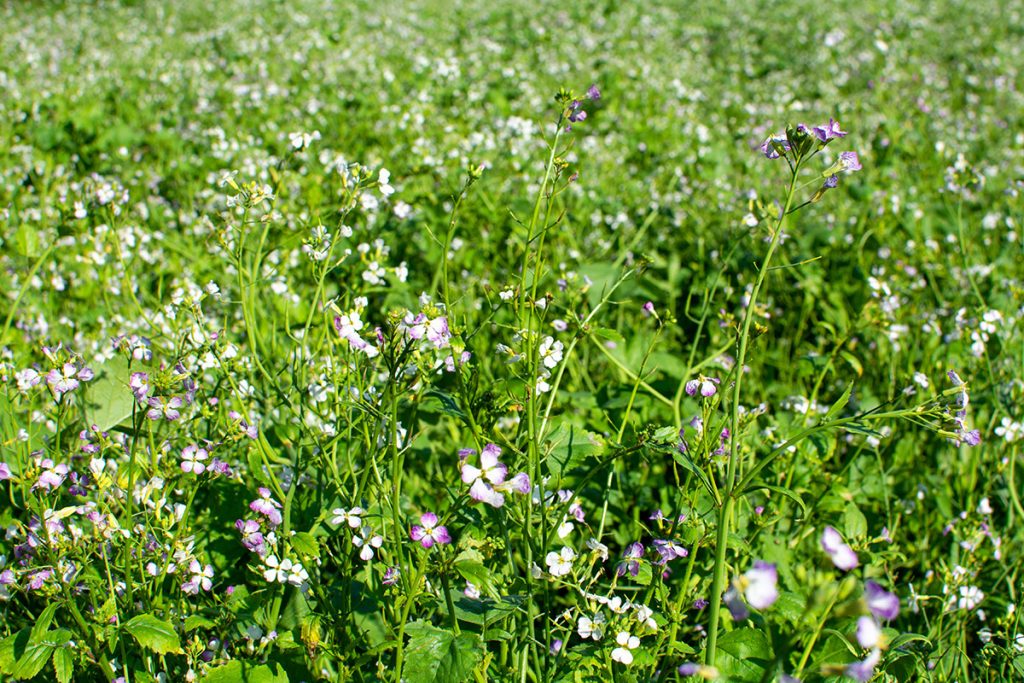
When participating in the Conversation Reserve Program (CRP), one effective means of protecting your vulnerable land is through cover crops. While often planted to preserve active cropland between harvests, cover crops can also serve as important tools for conservation purposes.
But what exactly is a cover crop, and how can it benefit your CRP land? Here, we’ll examine the benefits and disadvantages of cover crops, plus the best way to begin your cover crop project.
What is a cover crop?
Cover crops are crops grown specifically for improving the health of the soil and preventing soil erosion. In fact, cover crops, along with other techniques like no-till farming, can reduce erosion by over 40%. Plants grown for cover can include nitrogen-fixing legumes, forage grasses, wildflowers, forbs, or crop mixes containing any of the above.
On typical farms, cover crops are often planted during the fall and winter months, to protect vulnerable, bare soil from erosion caused by wind, snow, and rain. The protective leaves of the cover crops prevent rain from disturbing the soil which can lead to erosion and runoff.
Alternatively, cover crops can protect moist soil from the effects of drought. This helps to mitigate the loss of valuable nutrients from the soil, as well as to reduce the number of pesticides, herbicides, and toxic pathogens from entering waterways through runoff and ultimately threatening human health.
Planting cover crops is one of the foundational practices of good soil conservation, as it transforms otherwise unproductive and erodible land into protective canopy that can boost the health of the soil, limit erosion, and improve water quality. Among other benefits, cover crops can also help control crop pests, smother weeds, provide habitat for wildlife, and attract pollinators.
What are the benefits of cover crops?
Protects soil
One of the main functions of cover crops is to protect soil from erosion. Cover crops are often grown on cropland that has recently been harvested, to preserve the soil until the next growing season.
But the protective canopy can also be highly beneficial for vulnerable land in need of conservation. The roots of cover crops hold the soil in place to increase stability, while the plants provide cover to defend against wind and rain erosion. This can be especially beneficial during heavy flooding to reduce erosion and sediment runoff.
Provides organic matter and nutrients
Along with reducing erosion, cover crops also add nutrients to the soil, like organic nitrogen, phosphorus, and potassium. The decomposing organic matter of the cover crops provides nourishment to beneficial microorganisms in the soil, like fungi and bacteria. With these added nutrients, the overall health and fertility of the soil are amplified.
Establishes wildlife habitat
In addition to providing food to microorganisms in the soil, cover crops can act as habitat and nutrition for local wildlife. The native vegetation attracts local insects and bird species to provide shelter and food. This can be especially beneficial for local pollinators if species like wildflowers and other pollinating plants are grown.
Suppresses weed growth
By planting cover crops, you can reduce the opportunity for noxious weeds like Palmer amaranth from infiltrating your land. Cover crops can also help to prevent soil diseases and pests.
What are the disadvantages of cover crops?
While there are many benefits of growing cover crops, there are a few drawbacks. Improperly established cover crops can lead to a surge in unwanted pests, weeds, or diseases if the correct species are not used.
Additionally, the time and cost of growth can be a challenge. But through programs like EQIP and CSP, and the assistance of experts like All Native Seed, you can get assistance and reimbursement for establishing cover on your land.
How can I establish cover crops on my land?
To establish a healthy cover crop, you will need to select the correct seed mix for your region, climate, and goals. The selected species should be native to your area and emphasize nutrient cycling and biomass growth. Ensuring that you choose the right seeds for your cover crops is imperative to preventing the introduction of any weeds, as well as reaping the maximum benefit from this agricultural practice.
If you’re looking for more guidance with your cover crop seed mix and establishment practices, reach out to us at All Native Seed. We’ve been providing high-quality seed mixes to our customers since 2003. Along with our sister company, FDCE, we can help you determine the best cover crop species for your land and even assist with establishment. Contact us today to learn more!
